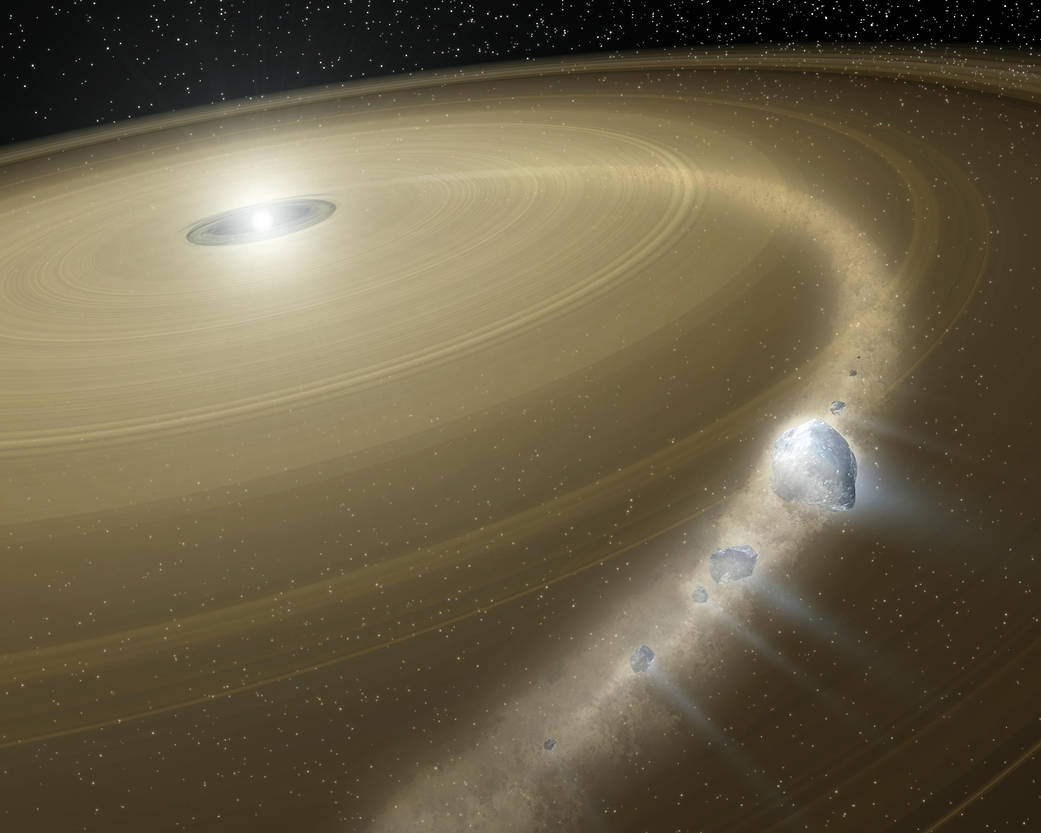This artist’s concept illustrates a comet being torn to shreds around G29-3, a so-called dead star, or white dwarf. NASA’s Spitzer Space Telescope observed a cloud of dust around this white dwarf that may have been generated from this type of comet disruption. The findings suggest that a host of other comet survivors may still orbit in this long-dead solar system. This illustration shows a comet in the process of being pulverized: part of it still exists as a chain of small clumps, while the rest has already spread out into a dusty disk. Comet Shoemaker-Levy 9 broke apart in a similar fashion when it plunged into Jupiter in 1994.
The white dwarf G29-38 began life as a star that was about three times as massive as our sun. Its death involved the same steps that the sun will ultimately undergo billions of years from now. According to theory, the G29-38 star became brighter and brighter as it aged, until it grew into a dying star called a red giant, which was large enough to engulf and evaporate any terrestrial planets that happened to be in its way. Later, the red giant shed its outer atmosphere, leaving behind a shrunken skeleton of star, called a white dwarf. If the star did host a planetary system, outer planets akin to Jupiter and Neptune and a remote ring of icy comets would remain.Image Credit: NASA/JPL-Caltech
2 min read





























